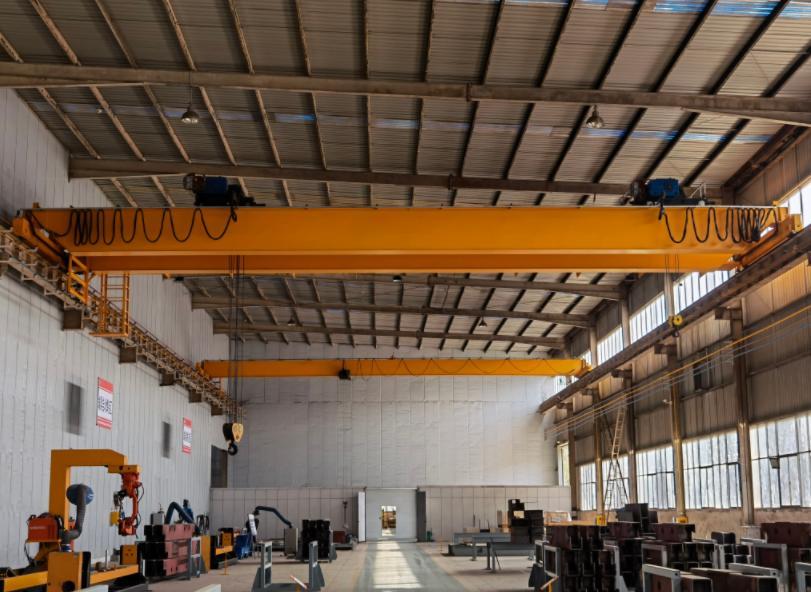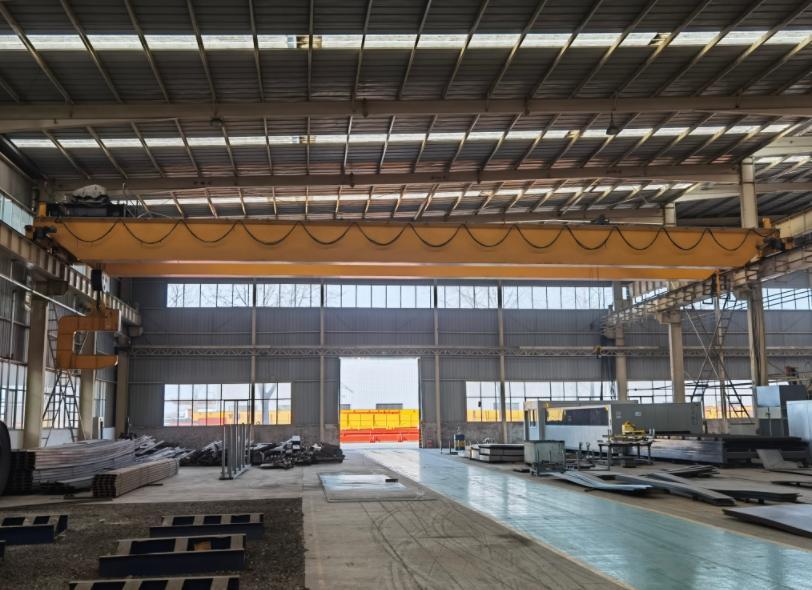Overhead cranes are essential in many industries for lifting and moving heavy loads. A 50-ton overhead crane, in particular, is a vital piece of equipment in environments such as steel mills, construction sites, and manufacturing plants, where lifting substantial loads is a regular necessity. However, with the massive weight capacity comes significant safety concerns that need to be addressed to prevent accidents, injuries, and property damage. To ensure the safe operation of a 50-ton overhead crane, it is essential to understand the safety features that are incorporated into the design, operation, and maintenance of the crane.
In this article, we will explore the critical safety features of a 50 ton overhead crane that you should know about to ensure both the safety of operators and the efficiency of crane operations.

1. Overload Protection System
One of the most important safety features of any crane, including a 50-ton overhead crane, is the overload protection system. Overloading a crane is one of the leading causes of crane accidents, as exceeding the rated load capacity can lead to mechanical failure, tipping, or even collapse of the crane structure.
An overload protection system is designed to monitor the crane’s load in real time. If the load exceeds the crane’s maximum capacity (50 tons in this case), the system will automatically stop the lifting operation to prevent overloading. This feature is crucial for preventing damage to the crane’s hoist, trolley, and structural components, as well as avoiding potential catastrophic accidents.
The overload protection system is often integrated with the crane’s control panel, allowing the operator to easily view real-time load data. It may also include an audible alarm or visual indicator to alert the operator if the double girder overhead crane is nearing or exceeding its rated load limit.
2. Limit Switches
Limit switches are another essential safety feature on a 50-ton overhead crane. These devices help to prevent the crane from exceeding its safe operating limits by restricting the movement of the crane’s hoist, trolley, and bridge.
Limit switches are typically installed at the end of the crane’s travel path, both horizontally and vertically. For example, when the hoist reaches the maximum lifting height, a limit switch will automatically stop the motion to prevent further travel that could damage the crane or the load. Similarly, horizontal limit switches ensure that the crane’s trolley does not move beyond the safe operational boundaries.
These switches are critical for preventing mechanical damage to the crane and for maintaining control over the crane’s operation. They also help avoid safety hazards associated with lifting or transporting heavy loads beyond the crane's designed capabilities.
3. Safety Locking Mechanisms
Safety locking mechanisms are used on critical parts of the crane, such as the hook and the hoisting mechanism, to prevent accidental disengagement or unexpected movements during operation. These mechanisms ensure that the hook, which is responsible for lifting the load, remains securely attached to the load and does not accidentally release it during operation.
In many 50-ton overhead cranes, safety latches or locks are built into the hook assembly to keep the hook securely fastened to the load. This feature is essential to prevent accidental load detachment, which could lead to dangerous situations, especially in high-rise construction or heavy lifting tasks.
The safety locking mechanism can also be integrated with sensors and alarms that notify the operator if the safety lock is not properly engaged or if there is any risk of a detachment.
4. Anti-Sway Systems
In heavy lifting applications, especially when lifting loads with a large mass, one of the challenges faced by crane operators is the risk of load sway. When a load swings during transportation, it can cause instability, making the crane more difficult to control and increasing the risk of accidents.
An anti-sway system is designed to mitigate the effects of load sway. This system uses sensors, feedback loops, and sophisticated algorithms to detect the movement of the load and automatically adjust the crane’s speed and movement patterns to reduce swaying.
For a 50-ton overhead crane, which is likely to carry large, heavy, and potentially awkward loads, an anti-sway system is crucial for ensuring smooth, controlled, and precise handling. The system helps to minimize risk by preventing unpredictable load swings that could lead to damage to surrounding infrastructure or injuries to workers in the vicinity.
5. Operator Control Systems
The operator is one of the most significant factors in the safety of a 50-ton overhead crane. Therefore, an effective operator control system is essential for providing clear, intuitive, and responsive control over the crane’s movements.
Modern overhead cranes typically include both ground-based and remote control systems. These systems allow the operator to control the crane from a safe distance, reducing the risk of injury. Additionally, remote controls may offer features like emergency stop buttons, speed control, and direction adjustments to enhance safety.
The operator control systems often include safety interlocks that prevent the crane from operating under unsafe conditions, such as if the crane is not in the correct position or if there is a malfunction in one of the crane’s systems. These control systems are typically designed to be user-friendly, with clear indicators that help operators make quick decisions and maintain a high level of safety.

6. Warning and Signal Systems
Clear communication is critical for safety when operating a 50-ton overhead crane, especially in busy or crowded environments. Warning and signal systems provide vital information to both the crane operator and nearby workers about the crane’s operation.
Warning systems often include audible alarms, flashing lights, or signal horns that alert people in the vicinity of the crane when it is in operation. These signals are especially important in environments where the operator's visibility is limited or when workers may be unaware of the crane's movements.
In addition to these physical signals, visual displays on the crane’s control panel provide the operator with real-time data about load weight, crane position, and other crucial parameters. This data helps the operator make informed decisions, reducing the risk of accidents and ensuring smooth operations.
7. Emergency Stop Mechanisms
An emergency stop system is a fundamental safety feature on all 50-ton overhead cranes. This system is designed to immediately halt crane operations in the event of an emergency or if a dangerous situation arises. An emergency stop button is usually located in multiple locations, including on the operator’s control panel and on the crane’s structure itself.
The emergency stop system is a critical tool for preventing accidents and injuries in situations where immediate intervention is necessary. For example, if the crane encounters a mechanical failure, or if a worker enters a dangerous area, the operator can quickly stop the crane’s operation to prevent harm.
The emergency stop mechanism is often integrated with the crane’s other safety features, such as the overload protection system and limit switches, to provide an added layer of security in case of emergencies.
8. Regular Maintenance and Inspections
Regular maintenance and inspections are essential for ensuring that all safety features of the 50-ton overhead crane remain in optimal working condition. Cranes should be inspected periodically for wear and tear, and any malfunctioning safety systems should be immediately addressed.
A maintenance schedule should be established based on the manufacturer’s recommendations, and it should include checks for key components such as hoists, limit switches, safety locks, and wiring. In addition, safety audits should be conducted regularly to ensure that the crane is compliant with industry standards and safety regulations.
Operators should also be trained to perform routine visual checks before using the crane, ensuring that all safety systems are in place and functioning correctly.
Conclusion
The safety of a 50-ton overhead crane is paramount for both the operator and the surrounding workers. Incorporating safety features like overload protection systems, limit switches, anti-sway systems, safety locking mechanisms, and emergency stop features ensures that the crane operates smoothly, preventing accidents and damage.
By investing in these safety systems, training crane operators thoroughly, and performing regular maintenance, industrial facilities can enhance the safety and reliability of their 50-ton overhead cranes, keeping both their workers and their operations safe.